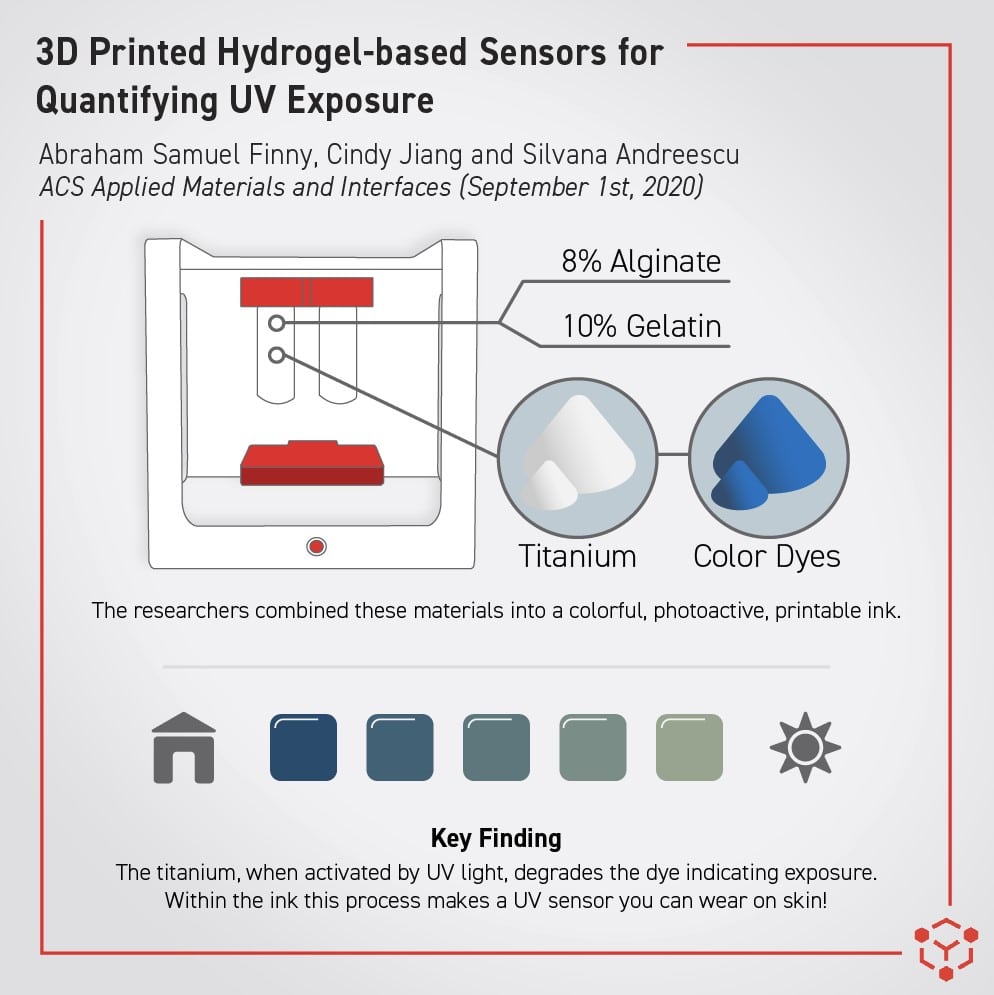
Allevi Blog
These Printable UV Sensors from Allevi Authors Could Save You From a Sunburn in the Future
- Updated on September 16, 2020
In their recent publication, Allevi authors, Abraham Samuel Finny, Cindy Jiang, and Silvana Andreescu developed a custom bioink which they can print into a skin safe UV sensor. Such a sensor could be used as an exciting safety tool against sunburns. It also has potential as a confirmation device for UV sanitation.

Creating the UV Sensors
The researchers combined 8% alginate and 10% gelatin to form a composite ink for their project. The main photo-active component of their constructs was titanium oxide powder, a common white pigment which releases electrons during ultraviolet radiation exposure. In different tests, the researchers also used several different colored dyes including methylene blue, methyl orange, and malachite green.
Key Findings
The researchers’ custom ink exhibits excellent 3D printing properties. While in cold conditions, the gelatin they used flowed freely enough to partially chemically crosslink with their alginate. The alginate portion of the ink also remained partially cross-linkable by cations, giving the ink further adaptability. The ink also exhibited shear-thinning behavior even while encapsulating the particles of both the titanium oxide and dyes. It was therefore able to extrude nicely and maintain a stable patch shape after printing.
The researchers also found that the color change in their constructs occurred predictably. The titanium oxide, when excited, began a chain of reduction-oxidation reactions within the hydrogel. This chain eventually led to the degradation of the organic molecules of the dyes. The hydrogel held enough water, titanium oxide, and dye to permit a visually noticeable reaction. It also allowed enough UV penetration for the reaction to complete in a timely manner. During outdoor exposure tests, they found that color intensity decreased linearly with the time of exposure, showing a predictable UV response in the sensors.
The sensors themselves are non-toxic so they could be used in a wide range of applications, potentially including direct skin contact devices. Such a sensor could be useful in indicating unforeseen UV exposure to help prevent sunburns. In the evolving field of UV sanitization, such a sensor could also indicate whether an article of clothing or tool was sufficiently exposed.
You can check out their paper, 3D Printed Hydrogel-based Sensors for Quantifying UV Exposure, in ACS Applied Materials and Interfaces. You can also read about other inspirational Allevi Authors on the Allevi Blog!

